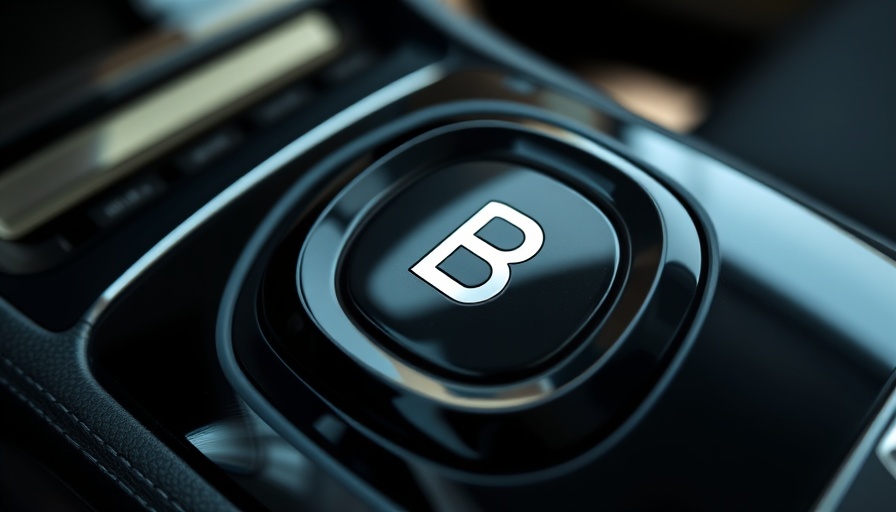
Understanding Your Gear Shift: The Mystery of the ‘B’ Setting
Have you ever found yourself staring at your vehicle’s gear shift, with that mysterious ‘B’ setting sparking curiosity? Many of us are familiar with the traditional P, R, N, and D (Park, Reverse, Neutral, Drive) markings. However, the ‘B’ is quite different, and understanding its purpose can enhance your driving experience, especially for homeowners looking to improve their knowledge about their vehicles.
What is the ‘B’ Mode and Why It Matters
The ‘B’ stands for “Brake or Engine Braking mode,” a feature commonly found in hybrid cars, such as those by Toyota and Honda. This function is more than just a letter on a console; it’s a boon for drivers who want to engage in regenerative braking, which allows the car to slow down while simultaneously recharging the hybrid battery.
Unlike traditional automatic transmissions where lower gears simply provide more power, the ‘B’ mode increases regenerative braking. This serves a dual purpose: it helps conserve energy that would typically be wasted during deceleration and reduces wear on your brake pads, meaning fewer repairs and replacements over time.
When to Use the ‘B’ Mode: Mastering Your Vehicle
The optimal situations for engaging ‘B’ mode are during stop-and-go traffic or when driving downhill. When you lift your foot off the accelerator in ‘B’ mode, the vehicle decelerates more effectively, which reduces the necessity for repeated braking. This not only enhances control over your vehicle but also plays a role in maintaining efficiency.
According to Toyota, this mode can be particularly beneficial if you are towing a load. It gives you greater control and braking assistance, particularly on steep descents. However, it’s wise to consider that overuse of this feature in everyday driving can lead to slightly decreased fuel efficiency, as it prioritizes braking over coasting.
Practical Insights for Everyday Drivers
Understanding this unique setting can transform your driving habits and enhance the longevity and performance of your vehicle. If you're using a Toyota hybrid, for instance, switching to ‘B’ while driving downhill not only aids your car's control but also maximizes the battery's efficiency through regenerative efforts.
For homeowners interested in green living and sustainability, knowing how to optimize your vehicle usage will play an important role in reducing your carbon footprint. Hybrid cars are designed to be more eco-friendly, so utilizing features like the ‘B’ mode can align with your commitment to sustainable living.
Recommendations and Tips for Efficient Driving
As you navigate the roads, keep these tips in mind:
- Use ‘B’ Wisely: Reserve this mode for specific situations rather than as a default driving mode to protect your vehicle's fuel efficiency.
- Stay Informed: Each car manufacturer may have different implementations of the ‘B’ feature. Consult your vehicle's manual for specific instructions related to your model.
- Be Mindful of Conditions: While ‘B’ mode is ideal for downhill drives or heavy stop-and-go traffic, relying too heavily on it can detract from your overall fuel efficiency during standard driving.
Final Thoughts: Embracing Vehicle Knowledge
Being aware of how various components of your vehicle function is integral to safe and efficient driving. The ‘B’ mode enhances your control while also benefiting the vehicle’s battery life and conservation efforts, crucial for those invested in a greener lifestyle. So, next time you hop in your car, don’t just drive—engage with it!
If you have more questions about your vehicle's features or how to maintain it effectively, reach out. Gaining more insights can lead to informed decisions that boost not only your vehicle's longevity but your driving experience as a whole.
 Add Row
Add Row  Add
Add 




Write A Comment